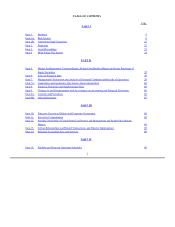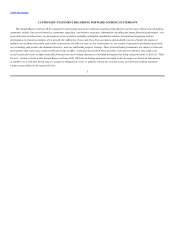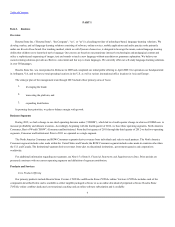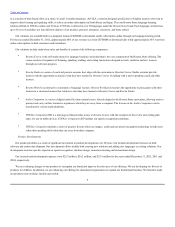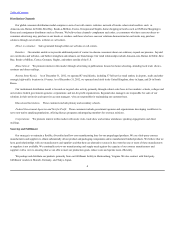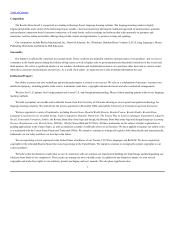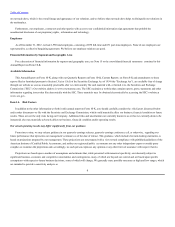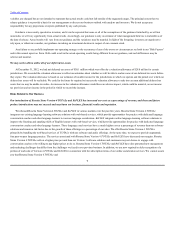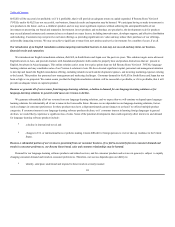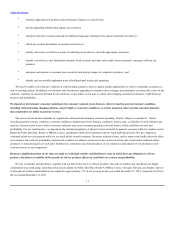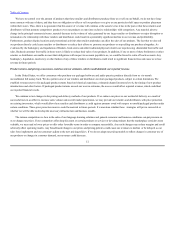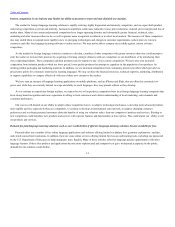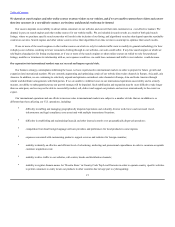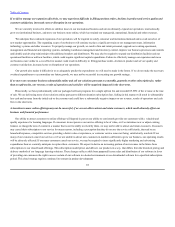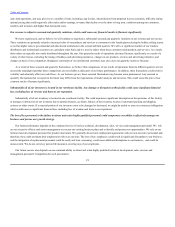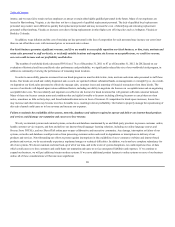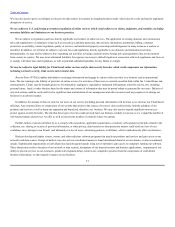Rosetta Stone 2012 Annual Report Download - page 13
Download and view the complete annual report
Please find page 13 of the 2012 Rosetta Stone annual report below. You can navigate through the pages in the report by either clicking on the pages listed below, or by using the keyword search tool below to find specific information within the annual report.
Table of Contents
We have no control over the amount of products that these retailers and distributors purchase from us or sell on our behalf, we do not have long-
term contracts with any of them, and they have no obligation to offer or sell our products or to give us any particular shelf space or product placement
within their stores. Thus, there is no guarantee that this source of revenue will continue at the same level as it has in the past or that these retailers and
distributors will not promote competitors' products over our products or enter into exclusive relationships with competitors. Any material adverse
change in the principal commercial terms, material decrease in the volume of sales generated by our larger retailers or distributors or major disruption or
termination of a relationship with these retailers and distributors could result in a potentially significant decline in our revenue and profitability.
Furthermore, product display locations and promotional activities that retailers undertake can affect the sales of our products. The fact that we also sell
our products directly could cause retailers or distributors to reduce their efforts to promote our products or stop selling our products altogether. As
evidenced by the bankruptcy and liquidation of Borders, book stores and other traditional physical retailers are experiencing diminished foot traffic and
sales. Reduced customer foot traffic in these stores is likely to reduce their sales of our products. In addition, if one or more of these bookstores or other
retailers or distributors are unable to meet their obligations with respect to accounts payable to us, we could be forced to write off such accounts. Any
bankruptcy, liquidation, insolvency or other failure of any of these retailers or distributors could result in significant financial loss and cause us to lose
revenue in future periods.
In the United States, we offer consumers who purchase our packaged software and audio practice products directly from us six-month
unconditional full money-back. We also permit some of our retailers and distributors to return packaged products, subject to certain limitations. We
establish revenue reserves for packaged product returns based on historical experience, estimated channel inventory levels, the timing of new product
introductions and other factors. If packaged product returns exceed our reserve estimates, the excess would offset reported revenue, which could hurt
our reported financial results.
We continue to test changes to the pricing and delivery methods of our products. If we reduce our prices or our method of delivery as a result of
successful tests in an effort to increase sales volume and overall market penetration, we may provide our retailers and distributors with price protection
on existing inventories, which would allow these retailers and distributors a credit against amounts owed with respect to unsold packaged product under
certain conditions. These price protection reserves could be material in future periods. It is uncertain whether these strategies will prove successful or
whether we will be able to develop the necessary infrastructure and business models.
The intense competition we face in the sales of our language learning solutions and general economic and business conditions can put pressure on
us to change our prices. If our competitors offer deep discounts on certain products or services or develop products that the marketplace considers more
valuable, we may need to lower prices or offer other favorable terms in order to compete successfully. Any such changes may reduce margins and could
adversely affect operating results. Any broad-based change to our prices and pricing policies could cause our revenues to decline or be delayed as our
sales force implements and our customers adjust to the new pricing policies. If we do not adapt our pricing models to reflect changes in customer use of
our products or changes in customer demand, our revenues could decrease.
12


